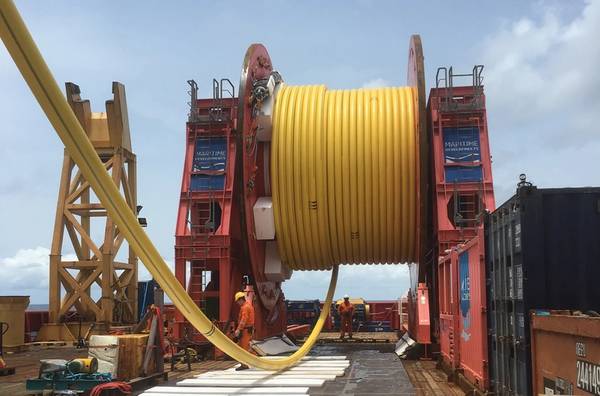
In April, Maritime Developments (MDL) concluded a flexible installation project offshore West Africa. The work scope, commissioned by DeepOcean, saw the MDL third-generation reel drive system (RDS) used on board the Polar Onyx for installation of a 2.5-kilometer flowline for the the Tullow Oil EN-09 TEN project offshore Ghana.
The flowline, installed in 1,750 meters water depth, marked the longest and deepest flowline installation performed in DeepOcean’s 20-year history. The subsea campaign on the deepwater Jubilee and Tweneboa, Enyenra, Ntomme (TEN) fields, enabled tie-in to the floating production, storage and offloading unit (FPSO) Prof. John Evans Atta Mills.
The MDL RDS was integrated complementing the vessel’s vertical lay system (VLS) and was operated by MDL’s offshore service team. The project marked the return of MDL’s RDS onto the Polar Onyx in West Africa after three years since the installation of flowlines and umbilicals with MPL in the Agbami field offshore Nigeria.
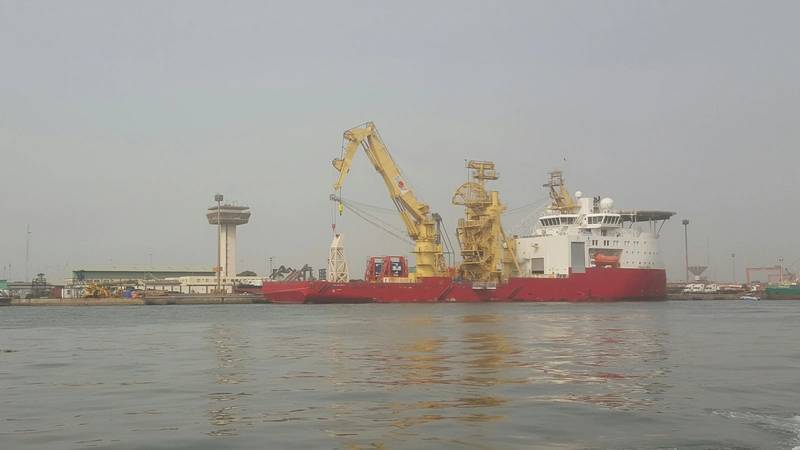 The MDL third-gen RDS on board Polar Onyx (Photo: MDL)
The MDL third-gen RDS on board Polar Onyx (Photo: MDL)
MDL – who marks its 20th anniversary this year – has been delivering portable flex-lay equipment to the oil and gas market since the mid-2000s. Over the years, the company developed the traditional reel drive system into a machine that is safer and more efficient to use, with a focus on reducing critical path.
The first major changes that led to the second generation system was to engineer the RDS towers to be self-supporting (eliminating the need for personnel to physically climb inside the reel hubs to chain the towers together), and introducing complete remote control. This includes an automated raising and lowering system for the reel hubs, as well as an automated clamping system for the towers, meaning that after walking between the reels, the system securely attaches to the tracks without the bolts having to be manually tightened. All this is performed using a wireless Walkabout Box (WAB) so the operator can stand in the most optimum and safest position on deck.
When the oil price collapsed, it led many installation contractors to seek effective cost reduction. Close discussions identified areas where further time saving could be achieved, to deliver reduced mission costs.
To that end, the third-generation RDS was designed to take up less space on deck, allowing for more product to be carried on board, or for the use of a smaller offshore support vessel (OSV). This is achieved thanks to a slimmer base and the power unit being integrated into one of the towers.
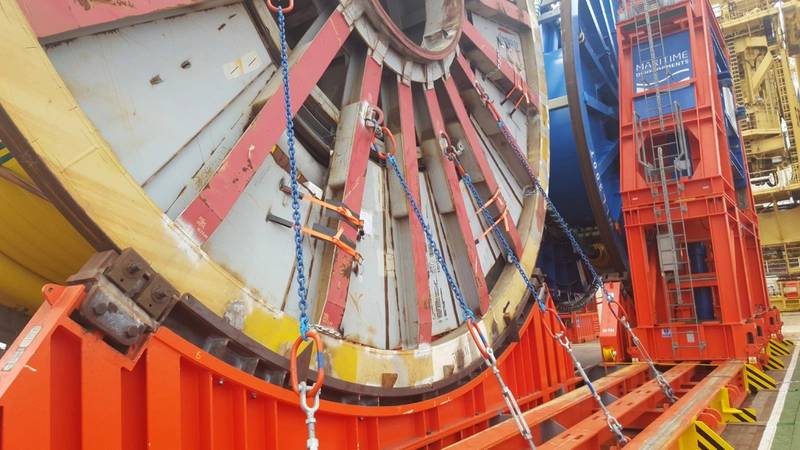 The third-generation RDS was used for the installation of a 2.5-kilometer flowline in the EN-09 field. (Photo: MDL)
The third-generation RDS was used for the installation of a 2.5-kilometer flowline in the EN-09 field. (Photo: MDL)
A key feature for speeding up mobilization in port and offshore are the reel cradles and chain lashing points integrated into the RDS tracks. What this means in practice is that the reels’ own cradles do not have to be individually welded onto the deck and can instead be slotted into the RDS’ integrated cradles.
Currently, MDL is in the process of adding another third-generation RDS to its rental fleet, and has materialized an upscaled model of the system in the form of an 800-metric-ton unit for Oceaneering in the US.
On top of the existing third-generation features, the 800Te RDS also allows for downscaling of the system to handle smaller reel weights and sizes for wider applications, as well as skidding fully loaded reels.
For DeepOcean’s EN-09 project, in addition to supplying the equipment and offshore personnel, MDL’s in-house engineering division provided the vessel integration works for the MDL equipment, supported the DNV GL class approval process, and provided remote mobilization support, all prior to project commencement.
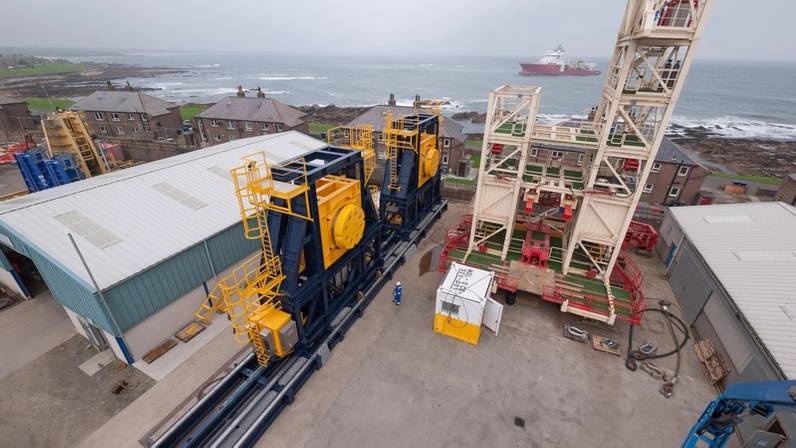 The 800-metric-ton RDS for Oceaneering (Photo: MDL)
The 800-metric-ton RDS for Oceaneering (Photo: MDL)
Dave Gardiner, MDL BD & Commercial Manager, said, “Project success is often derived from a variety of factors, including correct planning and experience. Both MDL and DeepOcean are celebrating 20-year anniversaries in 2019, which brings unrivaled track record when combined.
“In addition, continuity and familiarization were key to EN-09 project success. In 2016, MDL supplied the same RDS on board the Polar Onyx for another West African project with a duration of 114 days. By choosing MDL, DeepOcean secured a leaner and operationally effective solution for their project.
“MDL were able to assist a fast track project delivery schedule, thanks to having the complete engineering capability in-house and the most innovative RDS available on the rental market.”
Andreas Veiset Bergum, DeepOcean Engineering Manager Africa, said, “MDL’s contribution to the project with their innovative RDS system, competent engineering support and ‘can do’ attitude played an important role in efficient planning and safe execution of the project.”
The MDL third-generation RDS will now remain in West Africa, in anticipation of the local market’s shift from relying on installation vessels mobilized from Europe and elsewhere, toward a leaner and more flexible approach of using the assets available in region – allowing the project team to tailor the solution to their workscope, and not the other way around.
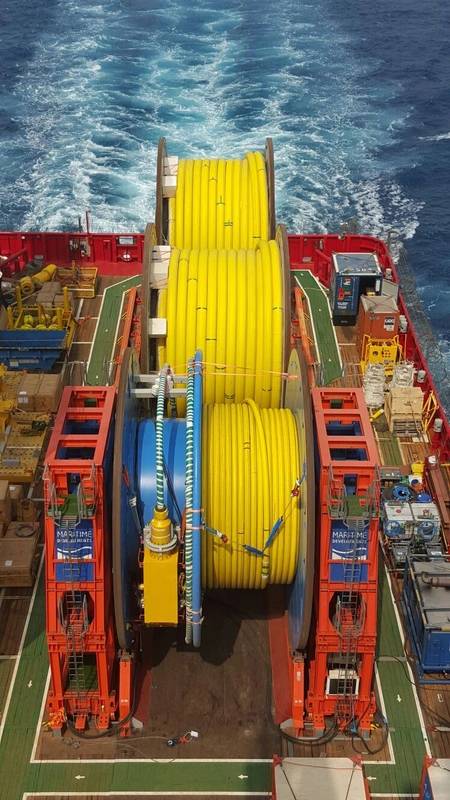 (Photo: MDL)
(Photo: MDL)